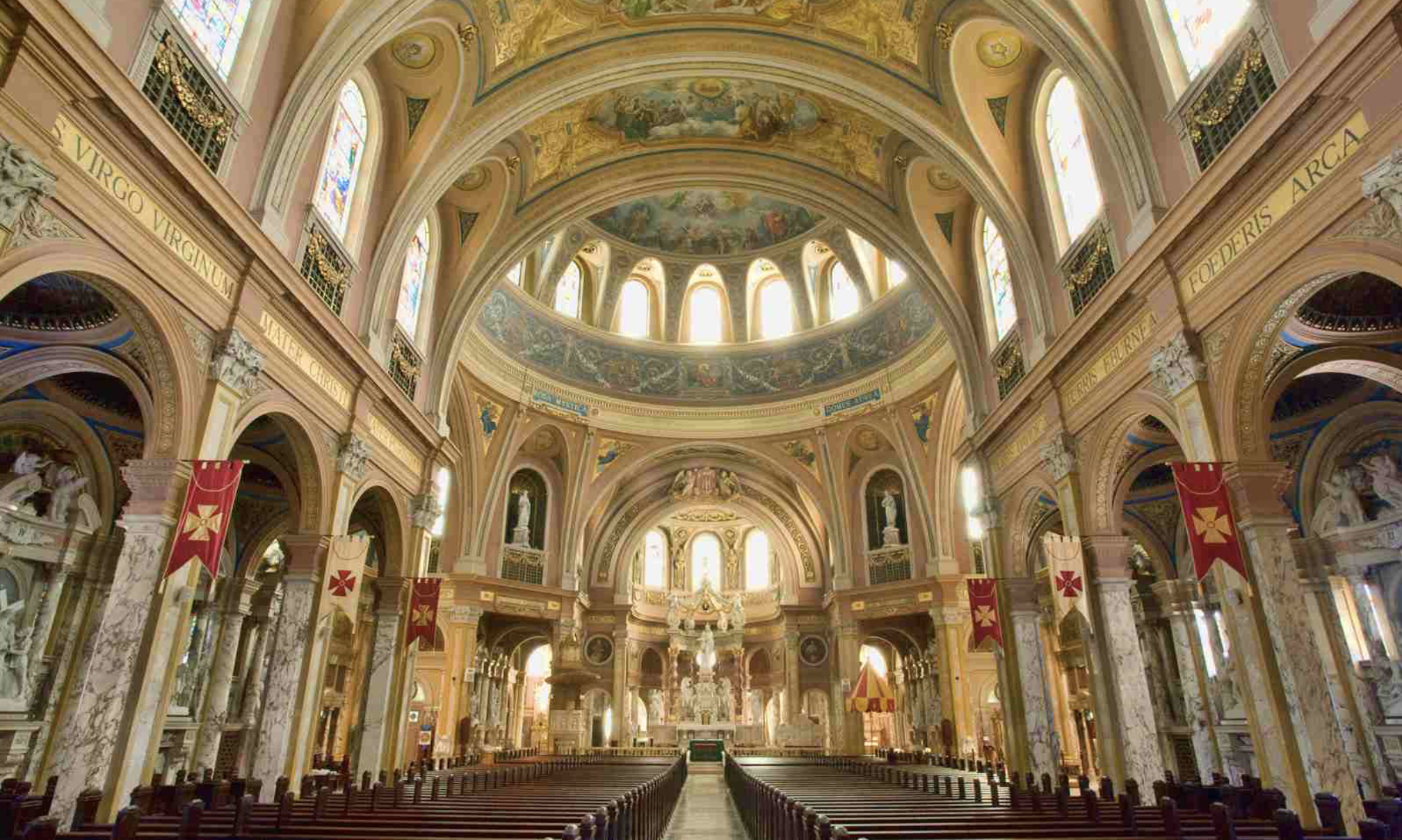Our Lady of Victory Basilica Complex
The Our Lady of Victory (OLV) Basilica and its surrounding complex in Lackawanna, New York, has long stood as a symbol of faith, artistry, and community pride. Designed by French ecclesiastical architect Emile Uhlrich and completed in 1926 under the leadership of Father Nelson Baker, the basilica and its associated schools, rectories, and service buildings formed a remarkable campus that shaped generations of Western New Yorkers.
The OLV complex traces its origins to the vision of Father Nelson Baker, whose leadership transformed a modest parish in Lackawanna into a nationally renowned center of worship, education, and charity. Construction of the basilica, begun in 1921 and completed in 1926, brought together Italian marble, mosaics, and stained glass of unmatched beauty, modeled after great European churches.
Surrounding the basilica, schools, convents, and service buildings created a self-sustaining campus that embodied Baker’s mission of care for orphans, the poor, and the faithful. The site quickly became both a spiritual heart for the region and an architectural marvel recognized well beyond Western New York.
By the 21st century, the need for recognition and long-term preservation was clear. kta Preservation Specialists worked closely with community partners to prepare the comprehensive National Register nomination for the multi-building complex, ensuring its historic significance was both documented and celebrated. This designation now secures a path for continued preservation and renewal, safeguarding a treasured site that continues to inspire.
Today, the Our Lady of Victory Basilica and Complex remains an active parish, a pilgrimage destination, and one of Western New York’s most cherished landmarks. With its recent National Register listing, the site now enjoys formal recognition that will support ongoing preservation efforts.
The project has also been recognized with a 2025 Preservation Buffalo Niagara Award, celebrating both its architectural and cultural significance. kta’s contribution—researching, documenting, and drafting the nomination—was instrumental in securing this recognition and in laying the foundation for a preservation plan that ensures OLV’s legacy continues to inspire future generations.







